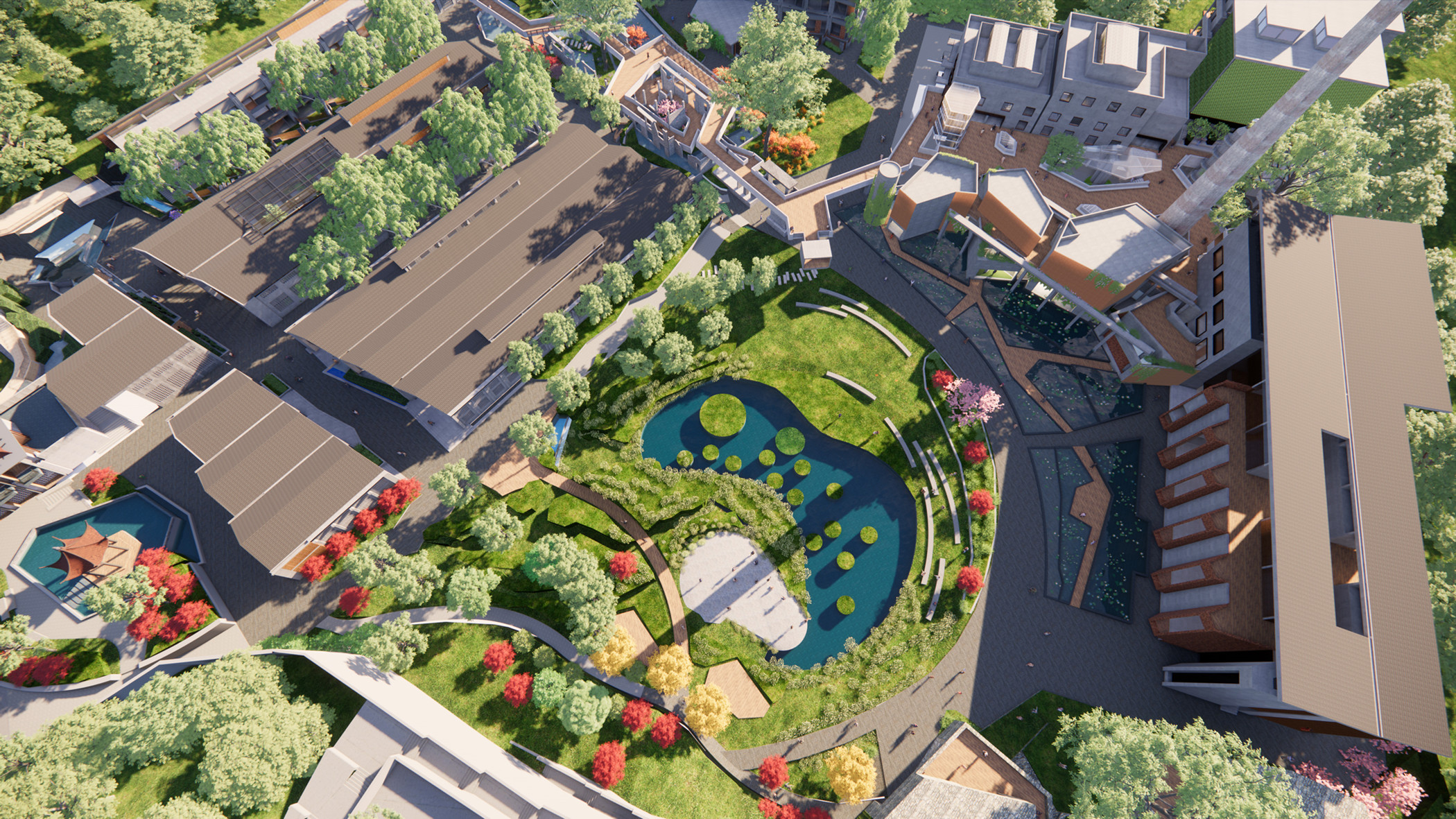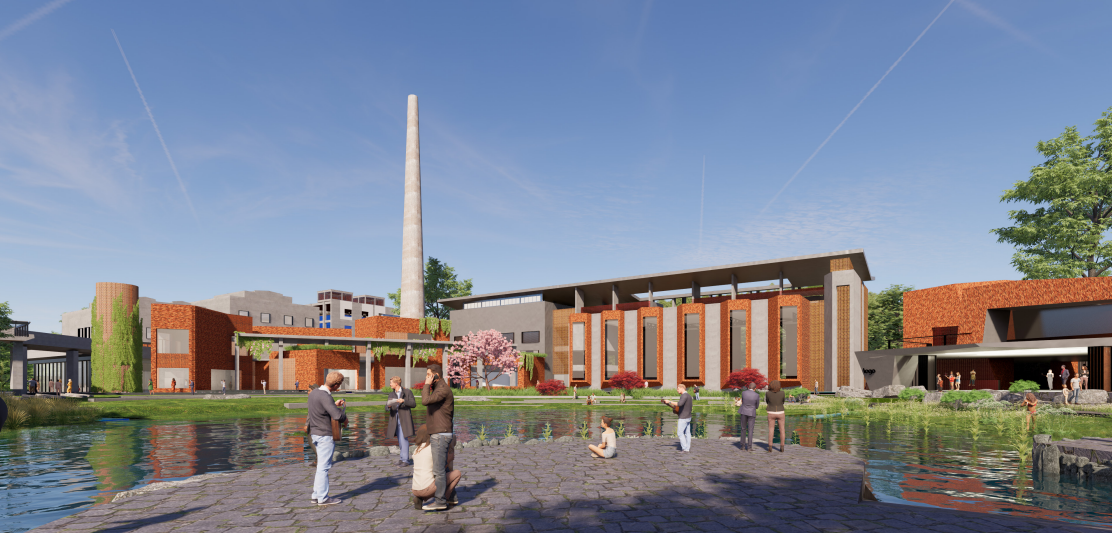The Jiugui cultural Art Park is creating a harmonious space between mountains and water. The original site is in Zhenwuying Village, Jishou City, Hunan Province, and offers an excellent location on the driving tour route, between Zhangjiajie and Phoenix Ancient Town. The Langtou River, which originates from the mountain of the Miao people, Lüdong Mountain Range, flows clearly through the park, nourishing the three clear springs (dragon, phoenix, and beast) used for brewing in the park. Therefore, the core point of the renovation concept is to preserve a certain original style, fully displaying the beauty of the traces of time. Based on this, the new design will also fit the mountain and water environment, making the renovation harmonious and innovative, while meeting future tourism and commercial functions.


Architectural design utilizes lines to cut through indoor and outdoor spaces, breaking the logic of the original industrial production, and reweaving new cultural and commercial spatial orders. In terms of architectural materials, forms, and spaces, it inherits and continues the regional context. Landscape design uses straight lines to cut and disrupt the architecture, establishing a visual connection between Longquan, Fengquan, and Shouquan. Architectural planning is centered around a central water stage layout, making the connections between indoor spaces, architecture, and landscapes even closer.

In terms of the design, the focus is on incorporating regional historical and cultural elements to preserve the essence of the location. The integration of new buildings isn't intended to mask the original factory's character but rather to elevate an ambiance that resonates with the original factory's aura through the interplay and introduction of new structures.

Landscape corridors are utilized within the site to connect the buildings, indoor spaces, landscapes, and outdoor stages, creating a rich spatial hierarchy. Simultaneously, these elements naturally guide the crowd, allowing for a carefully designed visiting sequence that transitions between indoor and outdoor spaces.



